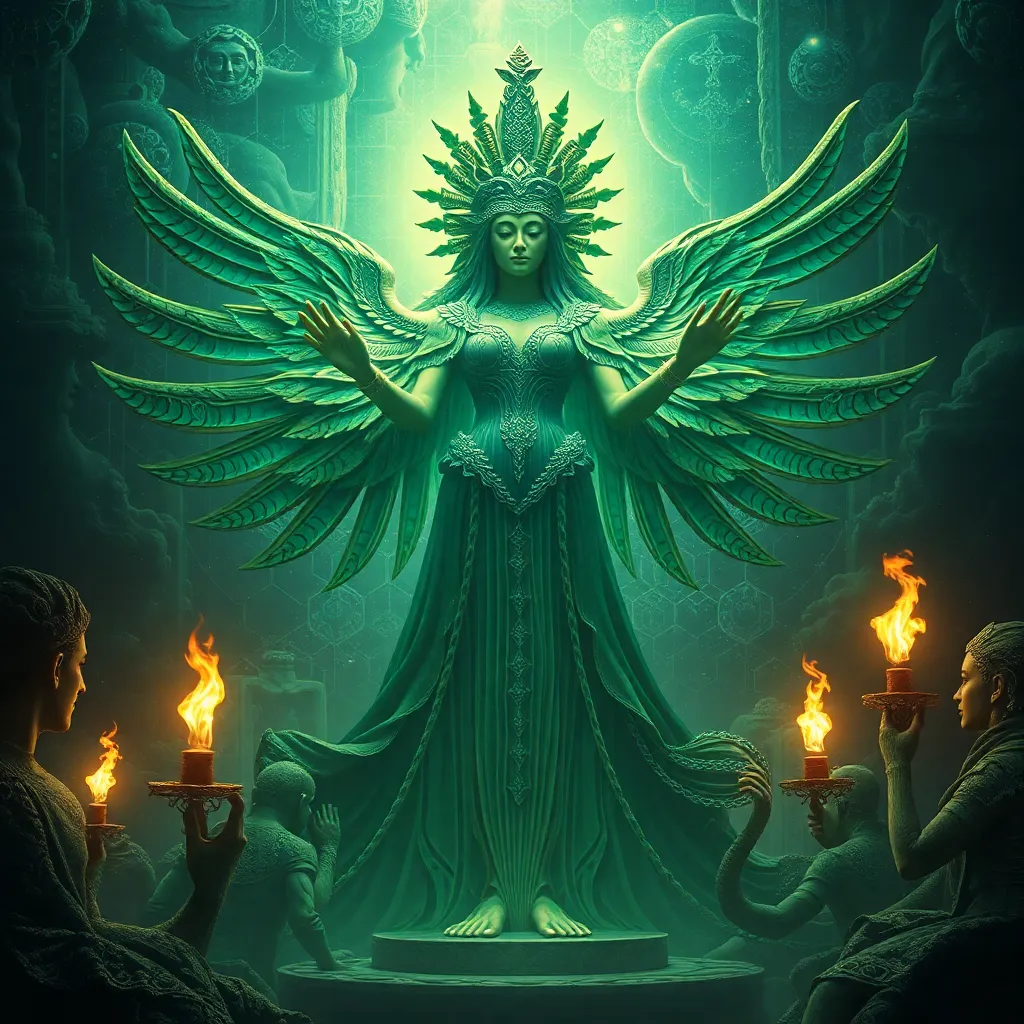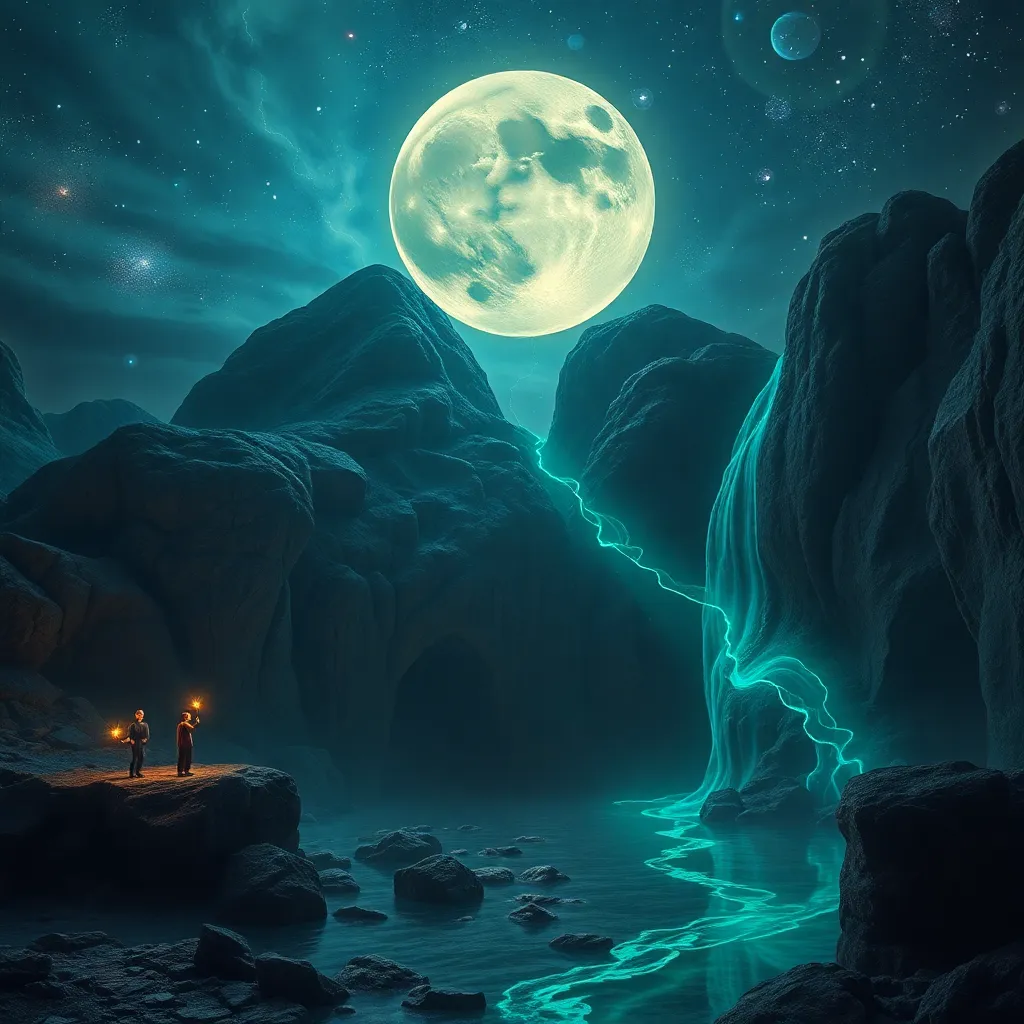Coatlicue and the Concept of Creation: The Goddess as the Origin of the Universe
I. Introduction
Coatlicue, an important figure in Aztec mythology, is often recognized as the mother of gods and the embodiment of the earth. Her name translates to “the one with the serpent skirt,” which symbolizes her deep connection to the earth and its cycles. Understanding Coatlicue’s role in creation myths is crucial for comprehending the broader cultural beliefs of the Aztec civilization, as these myths provide insight into their worldview, values, and spiritual practices. This article aims to explore the multifaceted role of Coatlicue as a creator goddess and the origin of the universe.
II. The Mythological Context of Coatlicue
Coatlicue is a central figure in Aztec cosmology, with a lineage that traces back to the primordial forces of creation. She is often depicted as a powerful deity who embodies both life and death, reflecting the duality present in many aspects of Aztec beliefs.
A. Coatlicue’s lineage and her significance in Aztec cosmology
Coatlicue is considered a primordial mother, born of Tlaltecuhtli, the earth goddess. In her mythology, she is the mother of several important deities, including:
- Huitzilopochtli, the god of war and the sun
- Coyolxauhqui, the moon goddess
- Other celestial beings and warriors
Her significance in Aztec cosmology lies in her role as the source of life and death, where she nurtures her children and simultaneously represents the destructive aspects of nature.
B. Key myths associated with Coatlicue
Several myths highlight Coatlicue’s dual nature and her role in creation. One key narrative involves her miraculous conception of Huitzilopochtli, which occurs after she acquires a ball of feathers. This myth emphasizes her power to create life and her importance as a maternal figure in the pantheon.
C. Representation of duality in her character
Coatlicue embodies duality—she is both nurturing and fearsome, representing fertility and the harsh realities of life and death. This complexity is reflected in her myths, where her nurturing aspect often leads to conflict and destruction, illustrating the interconnectedness of creation and destruction in the natural world.
III. Coatlicue’s Role as the Mother of Gods
As the mother of several deities, Coatlicue’s role extends beyond mere parentage; she is a powerful creator who shapes the destinies of her children and influences the cosmic order.
A. Examination of her children: Huitzilopochtli, Coyolxauhqui, and others
Each of Coatlicue’s children embodies different aspects of life and the cosmos:
- Huitzilopochtli: Represents the sun and war, symbolizing strength and vitality.
- Coyolxauhqui: Represents the moon and is often depicted in conflict with her brother, highlighting the struggle between night and day.
- Other deities: Each child contributes to the rich tapestry of Aztec mythology, with their stories intertwining with Coatlicue’s narrative.
B. The symbolism of motherhood and creation in her narratives
Coatlicue’s role as a mother signifies the importance of nurturing and the cycle of life. Her stories often illustrate the sacrifices mothers make for their children, reflecting the deep respect for motherhood within Aztec culture.
C. The implications of her maternal role in shaping the pantheon
Coatlicue’s maternal influence extends to the broader pantheon, where she is often seen as a unifying force that binds the deities together. Her ability to create and nurture allows for the continuation of life, making her an essential figure in Aztec spirituality.
IV. The Symbolism of Coatlicue’s Appearance
The physical form of Coatlicue serves as a powerful symbol within Aztec culture, representing her dual nature and connection to the earth.
A. Description of Coatlicue’s physical form and attire
Coatlicue is typically depicted as a fearsome figure adorned with a skirt made of serpents and a necklace of skulls. This imagery conveys her role as a goddess of life and death.
B. The significance of her serpent skirt and skull necklace
The serpent skirt symbolizes fertility and the earth, while the skull necklace represents death and sacrifice. Together, they encapsulate the themes of life and destruction inherent in her character.
C. How her imagery reflects themes of life, death, and rebirth
Coatlicue’s appearance emphasizes her role as a cyclical figure in the natural order, where death leads to rebirth, and the earth continuously regenerates itself. Her imagery is a reminder of the interconnectedness of all life forms.
V. The Concept of Creation in Aztec Beliefs
Coatlicue’s narrative is intricately linked to broader Aztec cosmology and the concept of creation.
A. Overview of Aztec cosmology and creation stories
Aztec cosmology is rich with tales of creation that illustrate the universe’s cyclical nature. The creation myths often involve themes of sacrifice, struggle, and transformation, reflecting the harsh realities of life.
B. The cyclical nature of creation and destruction in Aztec thought
In Aztec belief, the universe is in a constant state of flux, where creation and destruction are two sides of the same coin. Coatlicue embodies this cycle, showcasing how life emerges from chaos and ultimately returns to it.
C. Coatlicue’s unique position within these narratives
Coatlicue occupies a unique position as both the origin of life and a representation of death, illustrating the complexity of creation myths in Aztec culture. Her narratives emphasize the importance of balance in the universe.
VI. The Cultural Impact of Coatlicue
Coatlicue’s influence extends beyond mythology, impacting Aztec society, rituals, and modern interpretations.
A. Coatlicue’s influence on Aztec society, rituals, and traditions
As a central figure in Aztec religion, Coatlicue played a significant role in various rituals and ceremonies aimed at honoring the earth and the cycles of life. Her imagery often adorned temples and artifacts, signifying her importance in daily life.
B. The goddess in modern interpretations and representations
In contemporary culture, Coatlicue has been reinterpreted in various ways, often emphasized as a symbol of feminine strength and resilience. Artists and writers draw upon her mythology to explore themes of identity and empowerment.
C. The relevance of her story in contemporary discussions of feminism and identity
Coatlicue’s legacy resonates with modern discussions about feminism, where her portrayal as a powerful and complex woman challenges traditional narratives. Her story serves as an inspiration for those seeking to understand the role of women in mythology.
VII. Comparative Analysis with Other Creation Myths
Coatlicue’s narrative shares similarities and differences with creation myths from various cultures around the world.
A. Similarities and differences between Coatlicue and other creation deities
Many creation myths feature a mother goddess who gives birth to the world or its key deities. However, Coatlicue’s unique duality and her association with both life and destruction set her apart from figures like Gaia in Greek mythology or the Hindu goddess Durga.
B. Insights from global mythology that parallel Coatlicue’s role
Across different cultures, the archetype of the mother goddess often embodies themes of fertility and destruction. For example, the Hindu goddess Kali represents both creation and destruction, much like Coatlicue.
C. The universal themes of creation and destruction across cultures
These myths reflect universal themes of life, death, and rebirth, emphasizing the cyclical nature of existence. Exploring these narratives offers valuable insights into how different cultures understand their world.
VIII. Conclusion
Coatlicue stands as a significant figure in the realm of creation mythology, embodying the complexities of life, death, and rebirth. Her narratives provide profound insights into the Aztec worldview and the cultural values surrounding motherhood and sacrifice. The enduring legacy of Coatlicue’s mythology continues to inspire and inform discussions on identity and the



